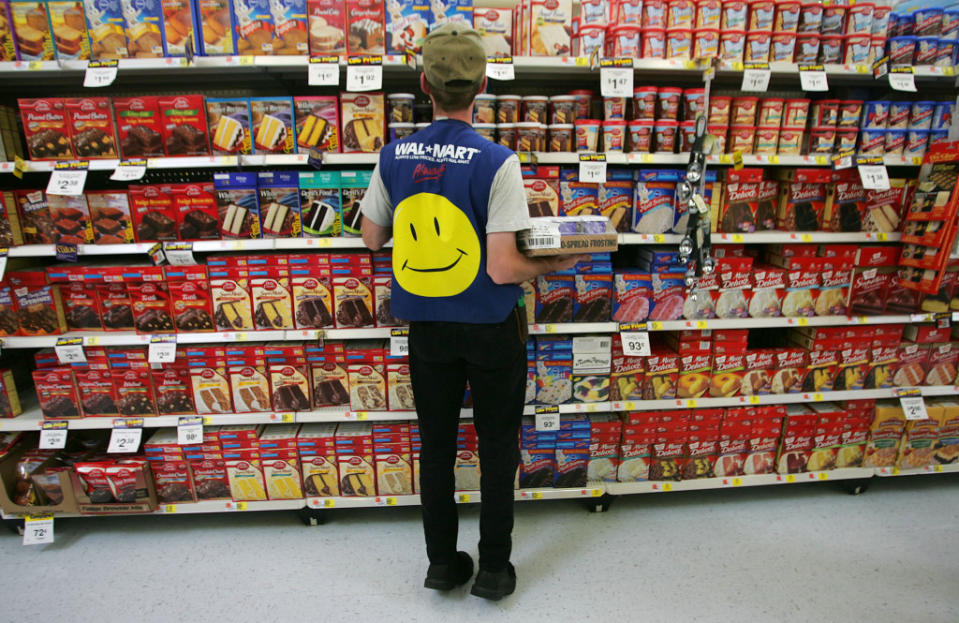Walmart Could Lose $12.7 Billion in Sales Over Next Decade if Food Stamps Are Slashed
Amid all the doom and gloom surrounding brick-and-mortar retailer is an overlooked, potentially painful new challenge : cuts to the food stamp benefits millions of Americans rely on to buy groceries.
The Trump administration’s budget proposal calls for major cuts to the Supplemental Nutrition Assistance Program between 2018 and 2028. The Congressional Budget Office has estimated the average food stamp household drew $252 a month in benefits in December, a figure that could drop to $173 under the proposal. That would come to $192 billion in cuts. Data prepared by retail consulting firm AlixPartners, and first reported by CNBC, found retailers could lose up to $70.7 billion in sales over the ten-year period.
The retailer at greatest risk is , which is also the top grocer in the U.S. and gets 56% of sales from food. AlixPartners figures Walmart, where 18% of all food stamps were redeemed in 2013 (the last year for which it disclosed the figure), would take a $12.7 billion hit over the decade.
It’s a tiny fraction of Walmart’s total sales, to be sure, but hardly welcome at a time is threatening to upend the grocery business and the arrival of discounter Lidl to the U.S. market and the expansion of Aldi has already sparked a price war. , whose grocery business is struggling to find traction with shoppers, could lose $4.8 billion to $5.3 billion.
A Walmart spokesman declined to comment, while a Target representative acknowledged there was a potential hit if the cuts go ahead but questioned the size of the threat. “Overall, we anticipate the impact of this proposal on Target’s business to be small and significantly lower than industry reports. We'll continue to monitor the budget process closely moving forward,” the Target representative said.
After Walmart and Target, Aldi faces the largest threat with $4.4-$4.9 billion in jeopardy; with $3.6-$3.9 billion and Kmart with $1.9-$2.2 billion at risk. The potential hit to sales across the industry comes at a time food prices are already falling.
See original article on Fortune.com
More from Fortune.com


